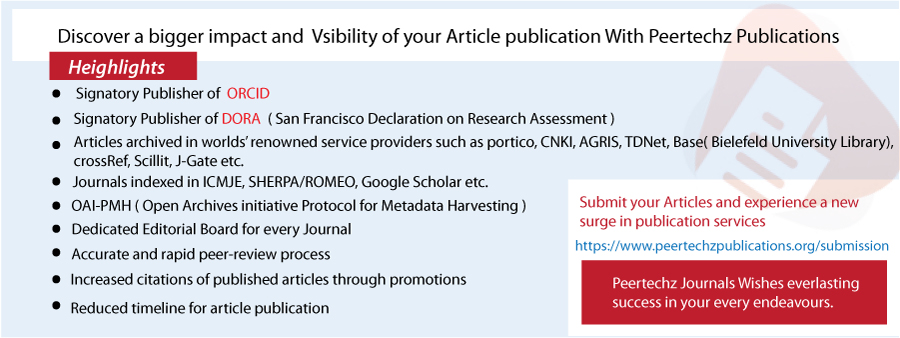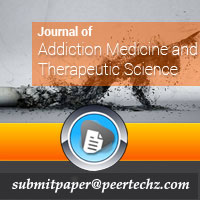Journal of Addiction Medicine and Therapeutic Science
Assessment of the Threshold Concentration of Ethyl Glucuronide in Hair for Diagnosing Chronic Alcohol use in Women: A Study in a Belarusian Clinical Cohort
Razvodovsky YE* and Schuriberco AV
Institute of Biochemistry of Biologically Active Compounds, National Academy of Sciences of Belarus, 230009, Grodno, st. A. Tysengauz, 5, Republic of Belarus
Cite this as
Razvodovsky YE, Schuriberco AV. Assessment of the Threshold Concentration of Ethyl Glucuronide in Hair for Diagnosing Chronic Alcohol use in Women: A Study in a Belarusian Clinical Cohort. J Addict Med Ther Sci. 2025:11(1):001-003. DOI: 10.17352/2455-3484.000057Copyright
© 2025 Razvodovsky YE, et al. This is an open-access article distributed under the terms of the Creative Commons Attribution License, which permits unrestricted use, distribution, and reproduction in any medium, provided the original author and source are credited.Aims: To determine the threshold concentration of Ethyl Glucuronide (EtG) in hair for diagnosing chronic alcohol use in women.
Methods: The study involved 15 alcohol-dependent women undergoing inpatient treatment for chronic alcohol use at the Grodno regional clinical center “Psychiatry-Narcology” (Belarus). The control group consisted of 15 moderately drinking representatives of the general population. The EtG level was assessed in the proximal 3-cm segment of scalp hair as per SoHT guidelines for alcohol marker detection. EtG concentration was determined by high-performance liquid chromatography – tandem mass spectrometry (HPLC-MS).
Results: At a threshold concentration of 38 pg/mg, the sensitivity, specificity, Positive Predictive Value (PPV), negative predictive value (NPV) of the result were 93%, 92%, 98%, 90%, respectively.
Conclusion: EtG is a reliable biochemical marker of chronic alcohol use in women. The relatively small sample size is a limitation and should be considered when interpreting the findings.
Introduction
Excessive alcohol consumption remains a pressing public health issue in many countries worldwide [1]. Recent decades have seen a narrowing of the gender gap in alcohol-related issues in the prevalence of alcohol dependence due to an increase in the level of alcohol-related problems in women [1]. It is important to objectify the diagnosis of alcohol dependence using direct biochemical markers. EtG is among the most reliable biochemical markers for identifying chronic alcohol use [2-4].
Determination of EtG content in hair has a number of advantages over routine biochemical markers, including non-invasiveness of obtaining biological material, ease of transportation, the possibility of long-term storage and repeated analysis, and a wide window of determination [5-8].
One of the important characteristics of the marker is its threshold concentration, which allows discrimination between different levels of alcohol consumption. The Society of Hair Testing (SoHT) recommends using a threshold level of 30 pg/mg EtG in the proximal 0 cm - 3 cm scalp hair to distinguish between chronic alcohol use and moderate consumption [7,9]. However, these recommendations are questioned by some experts, who point to significant individual variability in the formation and elimination of EtG [6,10]. Therefore, studies are currently ongoing to establish threshold values for EtG content, taking into account variables related to alcohol metabolism (gender, age, activity of enzymatic systems). While data on the effectiveness of EtG as a marker in women remain limited, prior research indicates that gender does not significantly affect EtG levels in hair [1,11].
The aim of this work was to determine the optimal threshold level of EtG concentration in hair for the diagnosis of chronic alcohol use in women.
Methods
The study involved 15 women with chronic alcohol use undergoing inpatient treatment for alcohol dependence at the Grodno regional clinical center “Psychiatry-Narcology”. The control group consisted of 15 moderately drinking (no more than one standard drink per day) representatives of the general population. All patients gave voluntary consent to participate in the study. The study was approved by the clinic’s Ethics Committee, and written informed consent was obtained from all participants. The EtG level was assessed in the proximal 3-cm segment of scalp hair as per SoHT guidelines for alcohol marker detection, collected upon patient admission. Hair samples were collected upon patient admission, prior to the initiation of any medical or detoxification procedures. The EtG concentration was determined by high-performance liquid chromatography – tandem mass spectrometry (HPLC-MS) [12]. Statistical data analysis was performed using Statistica, version 10.0 (StatSoft Inc., Tulsa, OK, USA) [13]. The assessment of diagnostic efficiency (sensitivity, specificity, Positive Predictive Value (PPV), Negative Predictive Value (NPV), as well as the optimal threshold concentration of EtG was carried out using ROC (receiver operating characteristic) analysis. The assessment of prognostic value was carried out by determining the area under the ROC curve – AUC (area under the ROC curves).
Results
The average EtG concentration in hair among women with chronic alcohol use was significantly higher than that of the general population: 141.8 ± 37.9 vs. 17.0 ± 7.3 pg/mg. The median EtG concentration was also significantly higher in women with chronic alcohol use: 59.4 (CI: 20.2 - 400) vs. 9.8 (CI: 8.9 - 35.1) pg/mg. Binary logistic regression analysis was conducted to model the relationship between EtG concentration (pg/mg) and group status (0 = control, 1 = chronic alcohol use). The resulting model was of the form:
logit(P) = β₀ + β₁ × EtG,
Where P is the probability of belonging to the chronic alcohol use group, β₀ is the intercept, and β₁ is the regression coefficient for EtG concentration (Table 1).
Receiver Operating Characteristic (ROC) analysis identified a threshold of 38 pg/mg for EtG concentration in hair, above which the likelihood of chronic alcohol use was high. At this threshold, the model demonstrated strong performance with sensitivity of 93%, specificity of 92%, PPV of 98%, and NPV of 90%. The sensitivity, specificity, PPV and NPV of the result were 93%, 92%, 98%, 90%, respectively. The area under the ROC curve (AUC) was 0.99, indicating a very good predictive value of the model.
Discussion
These data should be interpreted in the context of the results of previous studies. Most of the available literature data concerns the effectiveness of EtG in the diagnosis of alcohol dependence in men. In a meta-analysis, it was shown that the hair EtG content is a reliable marker of chronic alcohol abuse (sensitivity - 0.96 (CI: 0.72 - 1.00); specificity - 0.99 (CI: 0.92 - 1.00) [10]. The threshold hair EtG content of 30 pg/mg is recommended for detecting alcohol consumption in a daily dose of > 60 g [10]. In another meta-analysis of studies on the use of hair EtG for the diagnosis of alcohol abuse, the average concentration for men who died from chronic alcohol abuse was calculated to be 586.1 pg/mg (CI: 177.2 - 995.0 pg/mg) [6]. The threshold discrimination level between abstainers and social drinkers was 7 pg/mg, while the threshold discrimination level between social drinkers and individuals with chronic alcohol use was 30 pg/mg [6].
There are only a few studies devoted to the use of EtG content in the diagnosis of various alcohol consumption patterns in women. In a study involving pregnant women, the following threshold levels of EtG content in hair were established: abstainers < 7 pg/mg; moderate consumers (social drinkers) < 25 pg/mg; individuals with chronic alcohol use > 25 pg/mg [1].
Our findings align well with existing literature, which demonstrated the high diagnostic efficiency of EtG as a biochemical marker of alcohol dependence. Moreover, our findings are consistent with those of Crunelle, et al. [2], who found no significant gender differences in EtG concentrations, supporting the validity of using hair EtG levels in female populations [2]. The optimal threshold concentration of EtG in hair that we calculated, discriminating between moderate alcohol consumption and alcohol dependence, was marginally higher than those reported in other studies [5,14,15]. Before concluding, it should be noted that the relatively small number of participants limits generalizability.
In conclusion, the results of this study suggest that EtG is a reliable biochemical marker of chronic alcohol use in women. These results support recommending the use of determination of EtG concentration in hair in diagnosing chronic alcohol use in order to objectify the diagnosis.
- Wurst FM, Kelso E, Weinmann W, Pragst F, Yegles M, Sundström Poromaa I. Measurement of direct ethanol metabolites suggests higher rate of alcohol use among pregnant women than found with the AUDIT – a pilot study in a population-based sample of Swedish women. Am J Obstet Gynecol. 2008;198(4):407.e1–5. Available from: https://doi.org/10.1016/j.ajog.2007.10.801
- Crunelle CL, Cappelle D, Covaci A, van Nuijs AL, Maudens KE, Sabbe B, et al. Hair ethyl glucuronide as a biomarker of alcohol consumption in alcohol-dependent patients: role of gender differences. Drug Alcohol Depend. 2014;141:163–6. Available from: https://doi.org/10.1016/j.drugalcdep.2014.05.014
- Høiseth G, Morini L, Polettini A, Christophersen A, Mørland J. Ethyl glucuronide in hair compared with traditional alcohol biomarkers--a pilot study of heavy drinkers referred to an alcohol detoxification unit. Alcohol Clin Exp Res. 2009;33(5):812–6. Available from: https://doi.org/10.1111/j.1530-0277.2009.00900.x
- Razvodovsky YE. Biochemical markers of alcohol dependence. Narcology. 2020;19(1):85–92. Available from: http://dx.doi.org/10.25557/1682-8313.2020.01.85-92
- Appenzeller BM, Agirman R, Neuberg P, Yegles M, Wennig R. Segmental determination of ethyl glucuronide in hair: a pilot study. Forensic Sci Int. 2007;173:87–92. Available from: https://doi.org/10.1016/j.forsciint.2007.01.025
- Kharbouche H, Faouzi M, Sanchez N, Daeppen JB, Augsburger M, Mangin P, et al. Diagnostic performance of ethyl glucuronide in hair for the investigation of alcohol drinking behavior: a comparison with traditional biomarkers. Int J Legal Med. 2012;126(2):243–50. Available from: https://doi.org/10.1007/s00414-011-0619-9
- Kintz P. Consensus of the Society of Hair Testing on hair testing for chronic excessive alcohol consumption 2011. Forensic Sci Int. 2012;218(1–3):2. Available from: https://doi.org/10.1016/j.forsciint.2011.10.025
- Razvodovsky YE. Ethyl glucuronide as a sensitive marker of alcohol abuse. Int Arch Subst Abuse Rehabil. 2022;4(15):1–4. Available from: https://doi.org/10.23937/2690-263X/1710015
- Society of Hair Testing (SoHT). Consensus on alcohol markers in hair: Update 2019. Forensic Sci Int. 2019;301:101–4.
- Boscolo-Berto R, Viel G, Montisci M, Terranova C, Favretto D, Ferrara SD. Ethyl glucuronide concentration in hair for detecting heavy drinking and/or abstinence: a meta-analysis. Int J Legal Med. 2013;127(3):611–9. Available from: https://doi.org/10.1007/s00414-012-0809-0
- Wurst FM, Alling C, Araclottir S, Pragst F, Allen JP, Weinmann W, et al. Emerging biomarkers: new directions and clinical applications. Alcohol Clin Exp Res. 2005;29:465–73. Available from: https://doi.org/10.1097/01.alc.0000156082.08248.ab
- Schuriberco AV, Razvodovsky YE. Development and validation of a method for the quantitative determination of ethyl glucuronide in hair. In: Current problems of alcohol and other chemical addictions: abstracts of reports of the III International Scientific and Practical Conference. 2023;39–40.
- StatSoft, Inc. Statistica (version 10.0). Tulsa, OK: StatSoft Inc.; 2011.
- Lees R, Kingston R, Williams TM, Henderson G, Lingford-Hughes A, Hickman M. Comparison of ethyl glucuronide in hair with self-reported alcohol consumption. Alcohol Alcohol. 2012;47(3):267–72. Available from: https://doi.org/10.1093/alcalc/ags010
- Morini L, Varango C, Filippi C, Rusca C, Danesino P, Cheli F, et al. Chronic excessive alcohol consumption diagnosis: comparison between traditional biomarkers and ethyl glucuronide in hair, a study on a real population. Ther Drug Monit. 2011;33(5):654–7. Available from: https://doi.org/10.1097/ftd.0b013e318232950f
Article Alerts
Subscribe to our articles alerts and stay tuned.
 This work is licensed under a Creative Commons Attribution 4.0 International License.
This work is licensed under a Creative Commons Attribution 4.0 International License.


 Save to Mendeley
Save to Mendeley
